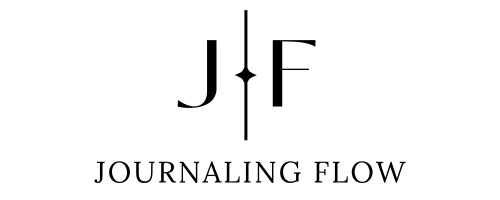
Journaling is more than just a place to record your thoughts—it can be a transformative tool for emotional healing. Writing allows you to process difficult emotions, gain clarity, and work through challenges in a safe, judgment-free space. Whether you’re navigating grief, trauma, or personal setbacks, journaling offers a path to healing and self-discovery.
In this post, we’ll explore how you can begin healing through journaling and share practical techniques to help you on your emotional journey.
Why Use Journaling for Emotional Healing?
Journaling supports emotional healing in several ways:
- Encourages self-expression: Writing helps you articulate emotions that might be difficult to verbalise.
- Provides clarity: Journaling allows you to explore and untangle complex feelings.
- Promotes emotional release: Putting thoughts on paper reduces their emotional intensity.
- Fosters self-compassion: Reflective writing helps you treat yourself with kindness and understanding.
Through consistent journaling, you can create a space to process your emotions and move toward healing.
Techniques for Healing Through Journaling
1. Freewriting for Emotional Release
Freewriting involves letting your thoughts flow onto the page without worrying about structure or grammar. This technique allows you to release pent-up emotions and gain insights into what’s weighing on your mind.
How It Helps: Freewriting provides a cathartic release and helps you identify patterns in your thoughts and feelings.
Exercise: Spend 10 minutes writing about whatever is on your mind. Start with, “Today, I feel…” and let your pen take it from there.
2. Gratitude Journaling for Perspective
Focusing on gratitude can shift your mindset and help you find light even during challenging times. Gratitude journaling isn’t about ignoring pain—it’s about acknowledging the good alongside it.
How It Helps: Gratitude promotes emotional resilience and helps balance negative emotions.
Exercise: Write down three things you’re grateful for each day. Reflect on how these positive elements support your healing journey.
3. Writing Letters for Closure
Writing unsent letters to people, events, or even yourself is a powerful way to process unresolved emotions. You can express what you wish you had said or explore feelings that remain unspoken.
How It Helps: Letter writing provides a safe outlet for emotions, offering a sense of closure and release.
Exercise: Write a letter to someone who has hurt or impacted you. Share your feelings openly, then decide whether to keep it, tear it up, or save it as a reflection.
4. Prompt-Based Journaling for Guidance
Sometimes, structured prompts can help you explore emotions that feel overwhelming or unclear. Prompts provide direction, making it easier to dig deeper into your feelings.
Prompts to try:
- “What emotions am I holding onto, and how do they affect me?”
- “What’s one thing I want to let go of, and what’s stopping me?”
- “What would healing look and feel like for me?”
5. Journaling for Forgiveness
Forgiveness—whether for yourself or others—can be a pivotal part of emotional healing. Use journaling to explore feelings of anger, guilt, or shame and work toward release.
How It Helps: Forgiveness journaling helps you process difficult emotions and find peace.
Exercise: Write about what forgiveness means to you. Reflect on what it would take to forgive someone or yourself and how it might change your perspective.
6. Visualisation Journaling for Hope
Visualisation involves imagining a future where you feel healed, whole, and at peace. Writing about this vision can inspire hope and guide your healing process.
How It Helps: Visualisation shifts your focus toward possibilities and growth.
Exercise: Write about your ideal future. Describe how you’ll feel, who you’ll be, and what steps you’ll take to get there.
10 Journaling Prompts for Emotional Healing
- “What emotion am I feeling most strongly right now, and what might be causing it?”
- “What’s one memory that still hurts, and how can I process it today?”
- “What does healing mean to me?”
- “What’s something I’ve learned from a past challenge or pain?”
- “Who or what do I need to forgive, and how can I begin?”
- “What’s one small step I can take toward feeling more at peace?”
- “What would I say to my younger self who experienced this pain?”
- “What support do I need right now, and how can I ask for it?”
- “What’s one thing I’m grateful for despite my current struggles?”
- “What does self-compassion look like for me today?”
Tips for Making Journaling a Healing Habit
- Create a safe space: Choose a quiet, comfortable place where you can write without interruptions.
- Be honest with yourself: Write authentically, even if your feelings are messy or difficult to face.
- Make it a routine: Dedicate time to journaling regularly, whether daily or weekly.
- Review and reflect: Occasionally revisit past entries to see how far you’ve come in your healing journey.
Conclusion: Find Healing Through Journaling
Healing through journaling is a deeply personal and empowering process. By exploring your emotions, expressing gratitude, and using techniques like letter writing or visualisation, you can work through pain and move toward greater emotional well-being. Remember, healing is a journey—not a destination—and journaling can be your companion along the way.
Start your journey today with just a few minutes of writing, and discover how journaling can transform your path to emotional healing.
Want more journaling inspiration?
Get exclusive prompts, techniques, and insights straight to your inbox.
Join the Journaling Flow newsletter today!

